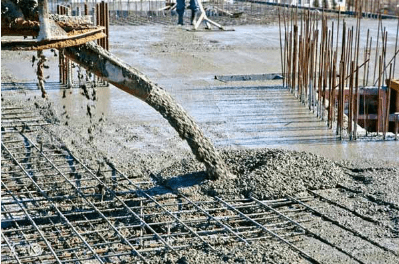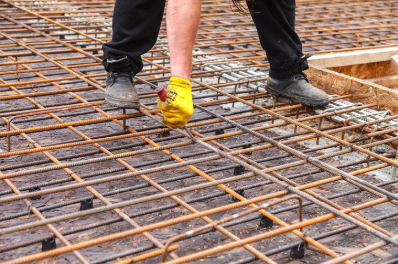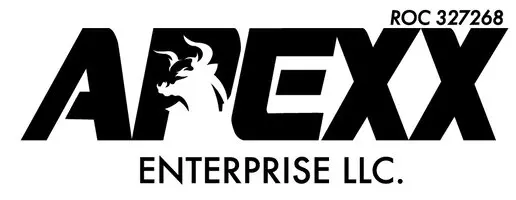What Is Rebar and Why Is It Important in Concrete
Call us at (520) 301-0316

A right foundation is a basic necessity of constructing strong and long-lasting buildings. Amongst all the portions that make the structure stable and long-lasting, one that really attracts most is the rebar. What exactly is rebar, and what makes it an essential part of construction? All this will be discussed in the article about general concept , the significance of it in concrete, and its significance in modern times of construction practice. Wondering what rebar is? The information you are seeking is right here, brought to you by Apexx Enterprise LLC.
What Is Rebar?
Rebar, the shortened term for “reinforcing bar,” is actually a steel bar or mesh of steel wires placed inside concrete for enhancing its strength. Concrete has good compressive strength but lacks tensile strength, so it always cracks under tension. It fills this shortcoming by distributing loads evenly across the concrete while supporting it in a way that makes the structure stronger and tougher.
Rebar also comes in several forms, such as deformed bars with ridges that create the hooks for better gripping, plain bars, or meshes. These enable engineers and contractors to select the most suitable ones for their specific projects.
Why Is Rebar Important in Concrete?
1. Strengthening and load-carrying capacity improvement
Concrete can take up a lot of compression but can take very little tension. The characteristic leaves concrete vulnerable to cracking under bending, stretching, or shear forces. Rebar fills this gap by adding tensile strength to the structure so that it does not become weak under different types of loads.
2. Preventing Cracks and Deterioration
Temperature fluctuations, settling, and external stresses often cause concrete to crack.These cracks are spread less by rebar, hence retaining the structure intact. It maintains the concrete cohesion and, in turn, avoids water entry with further damage by freezing or thawing or corrosion.
3. Improving Flexibility and Durability
Concrete and rebar, when combined, form a composite material that is able to bear dynamic forces. The combination forms structures that are both strong and flexible, thereby withstanding environmental and mechanical stresses without compromising stability.
4. Extending Longevity
Rebar is crucial in extending the life of concrete structures. It reduces maintenance costs by mitigating cracking and environmental damage, thus enhancing the structure’s resilience to adverse conditions, including chemicals, saltwater, and extreme weather.
5. Adaptability to Diverse Applications
Rebar can be made with different shapes depending on the particular construction requirements and can be prepared in straight bar forms, mesh forms, and custom shapes depending on the project. It leaves engineers and architects with much leeway in the design for particular projects.
Call us at (520) 301-0316

Common Types of Rebar in Construction
- Carbon Steel Rebar: The most widely used due to its strength, cost-effectiveness, and flexibility.
- Stainless Steel Rebar: Offers high resistance to corrosion, ideal for structures subjected to harsh environmental conditions.
- Epoxy-Coated Rebar: It has a corrosion-resistant coating over it, that can withstand both marine and humid environments.
- Glass-Fiber-Reinforced Polymer (GFRP) Rebar: This is a non-metallic material that offers high resistance to corrosion and is much lighter than steel.
- Welded Wire Fabric (WWF): Precast meshes for slab and wall reinforcement.
The Process of Installing Rebar
Incorporating rebar into concrete involves meticulous planning and precision. Before pouring the concrete, contractors strategically position rebar to align with the expected load distribution and stress points. Proper spacing, alignment, and secure fastening are crucial to ensuring even reinforcement. The installation process typically includes:
- Designing the Reinforcement Layout: Engineers calculate the required amount and placement of rebar based on structural demands.
- Positioning the Rebar: The Rebar is arranged in grids, layers, or custom configurations as specified in the design.
- Tying and Securing: The bars are fastened using steel wire ties to maintain alignment during concrete pouring.
- Final inspection and adjustment: All will be checked for proper placement before the concrete is poured.
Why Choose Apexx Enterprise LLC for Your Rebar Needs?
We recognize that rebar is an important aspect of your construction’s strength and durability at Apexx Enterprise LLC. Whether it’s a new building, an existing structure being repaired, or you need some customized reinforcement solution, our team is committed to providing quality rebar and professional expertise.
We pride ourselves on offering:
- High-grade rebar products tailored to your project specifications.
- Experienced professionals who ensure precise installation and alignment.
- Solutions that enhance the safety, durability, and beauty of your structures.
Building a Future on Solid Foundations
Rebar is more than a construction material but is the backbone of modern concrete structures. Its enhanced load-bearing capabilities, resistance to cracking, and extended lifespan necessitate its incorporation into any construction process. Apexx Enterprise LLC is here to help you build structures that will stand the test of time as a trustworthy provider of rebar solutions.
If you’re looking to initiate a new project or need professional help in bolstering your structures, contact Apexx Enterprise LLC today. Let us demonstrate how rebar can change your construction plans into a permanent reality.
